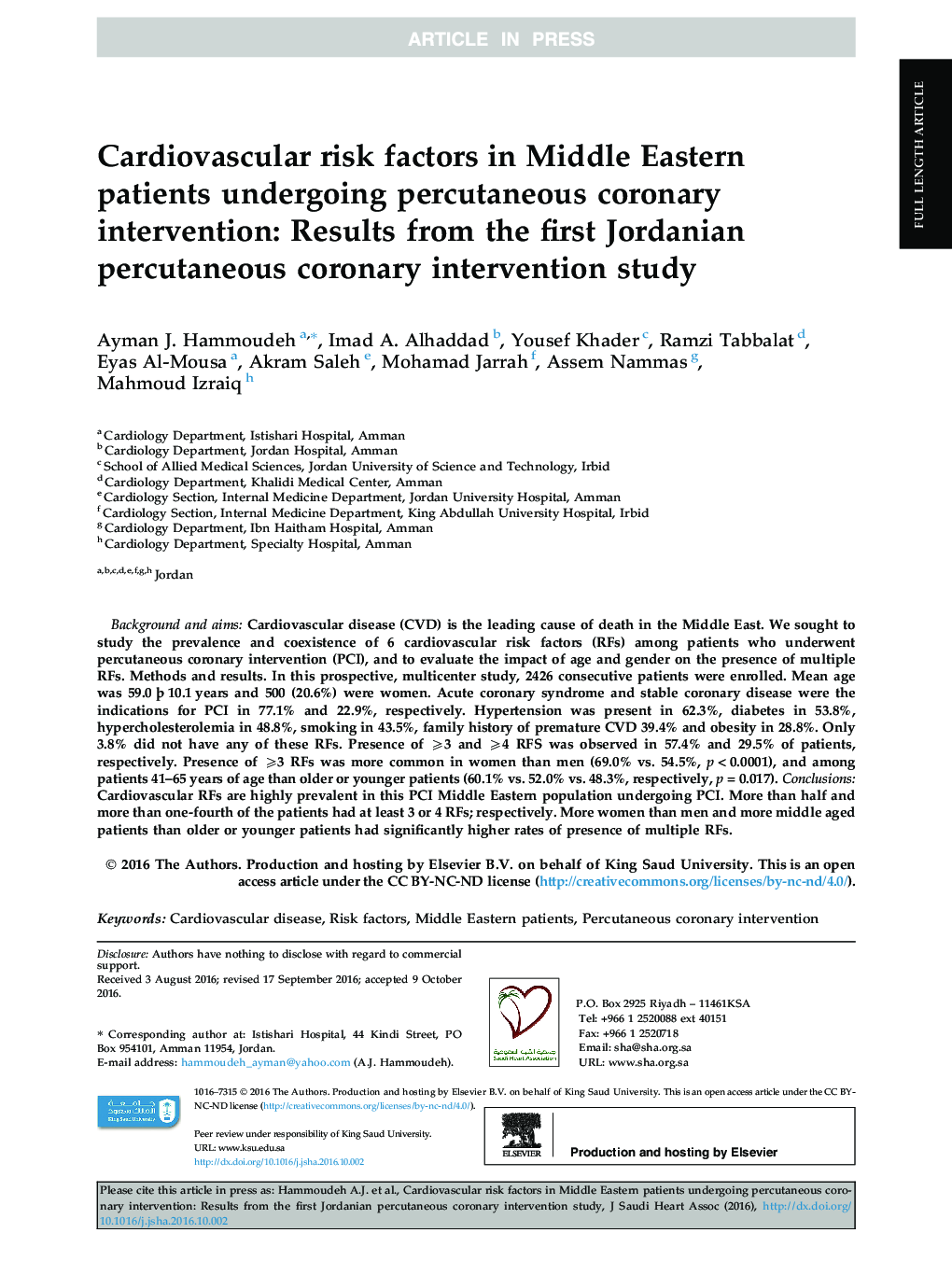| Article ID | Journal | Published Year | Pages | File Type |
|---|---|---|---|---|
| 8669887 | Journal of the Saudi Heart Association | 2017 | 8 Pages |
Abstract
Background and aims: Cardiovascular disease (CVD) is the leading cause of death in the Middle East. We sought to study the prevalence and coexistence of 6 cardiovascular risk factors (RFs) among patients who underwent percutaneous coronary intervention (PCI), and to evaluate the impact of age and gender on the presence of multiple RFs. Methods and results. In this prospective, multicenter study, 2426 consecutive patients were enrolled. Mean age was 59.0 ± 10.1 years and 500 (20.6%) were women. Acute coronary syndrome and stable coronary disease were the indications for PCI in 77.1% and 22.9%, respectively. Hypertension was present in 62.3%, diabetes in 53.8%, hypercholesterolemia in 48.8%, smoking in 43.5%, family history of premature CVD 39.4% and obesity in 28.8%. Only 3.8% did not have any of these RFs. Presence of ⩾3 and ⩾4 RFS was observed in 57.4% and 29.5% of patients, respectively. Presence of ⩾3 RFs was more common in women than men (69.0% vs. 54.5%, p < 0.0001), and among patients 41-65 years of age than older or younger patients (60.1% vs. 52.0% vs. 48.3%, respectively, p = 0.017). Conclusions: Cardiovascular RFs are highly prevalent in this PCI Middle Eastern population undergoing PCI. More than half and more than one-fourth of the patients had at least 3 or 4 RFs; respectively. More women than men and more middle aged patients than older or younger patients had significantly higher rates of presence of multiple RFs.
Related Topics
Health Sciences
Medicine and Dentistry
Cardiology and Cardiovascular Medicine
Authors
Ayman J. Hammoudeh, Imad A. Alhaddad, Yousef Khader, Ramzi Tabbalat, Eyas Al-Mousa, Akram Saleh, Mohamad Jarrah, Assem Nammas, Mahmoud Izraiq,
